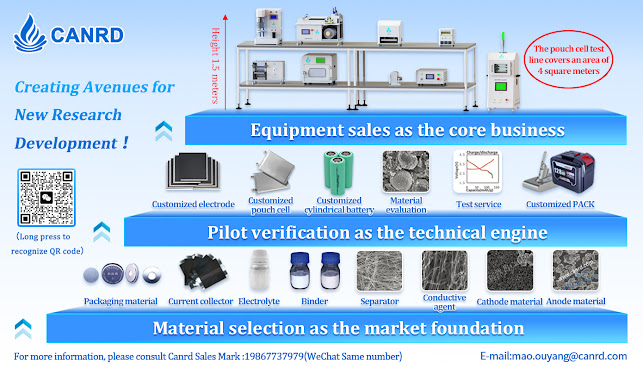Ternary lithium battery classification
Ternary lithium batteries, that is, lithium batteries that use nickel cobalt manganese oxide (NCM) or nickel cobalt aluminum oxide (NCA) as the positive electrode material, have various classification methods according to different classification standards.
1.Classification by nickel, cobalt, manganese (aluminum) element ratio
NCM111: The molar ratio of nickel, cobalt and manganese is 1:1:1. The ternary lithium battery with this ratio has good comprehensive performance, the voltage platform is stable at around 3.6V, it is safer, and the cost control is relatively reasonable. It has certain applications in some small electronic devices with relatively balanced battery performance requirements, such as early laptops, power banks and other fields.
NCM523: The ratio of nickel, cobalt, and manganese is 5:2:3. Compared to NCM111, it significantly improves energy density, reaching 150 - 180 Wh/kg. This results in an increase in the driving range of electric vehicles equipped with this battery. At the same time, the cobalt content is reduced, which alleviates cost pressures associated with the scarcity of cobalt resources. It is currently widely used in many mainstream new energy vehicle models.
NCM622: The ratio of nickel, cobalt and manganese is 6:2:2. If the nickel content is further increased, the energy density can exceed 180Wh/kg, and the endurance is stronger. However, the high nickel content poses a higher challenge to the thermal stability of the battery, and the production process requirements are more stringent. It is mostly used in mid-to-high-end new energy vehicles to meet the long-endurance requirements.
NCM811 : The ratio of nickel, cobalt and manganese is as high as 8:1:1. The energy density can reach 200Wh/kg and above, which greatly improves the endurance of electric vehicles. However, due to the extremely high nickel content, the thermal management of the battery during charging and discharging becomes more difficult, and it is highly dependent on the battery management system (BMS). It is often used in high-end electric vehicle products that pursue extreme endurance.
For the NCA system, the nickel-cobalt-aluminum-lithium material used by Tesla as a representative example has a high nickel content, often above 80%, and a relatively low cobalt content. Aluminum plays a role in stabilizing the structure as a doping element. This type of battery has an outstanding energy density advantage of 200-260Wh/kg, which helps Tesla models achieve long battery life. However, its production process is complex, and the purity of raw materials is extremely high. It also has poor thermal stability, and needs to be equipped with a precise and powerful BMS to ensure the safe operation of the battery.
2. Classification by application field
Consumer electronics ternary lithium batteries: This type of battery is mainly designed for small consumer electronic products such as smartphones, tablets, Bluetooth headsets, etc. The capacity is usually between 1000-5000mAh, focusing on energy density to meet the needs of thin and light equipment, while taking into account the charge and discharge rate performance to ensure that users can charge quickly in a short time. The external dimensions are highly customized according to different products, mostly in cylindrical or square soft-pack form.
Power ternary lithium battery: serves electric vehicles, electric motorcycles and other transportation vehicles. In order to achieve long vehicle endurance, the battery capacity ranges from tens of kilowatt-hours to hundreds of kilowatt-hours, and the energy density is high. The charge and discharge rate performance is also critical, which is directly related to the acceleration and climbing ability of the vehicle. The battery pack is usually composed of many single cells through a complex PACK process, and a thermal management system such as forced liquid cooling or air cooling is used to ensure the stability of the battery operating temperature.
Energy storage ternary lithium battery: used in grid energy storage, home energy storage system and other scenarios. Focus on the cycle life and cost-effectiveness of the battery. The capacity specification is determined according to the scale of the energy storage project, ranging from several kilowatt-hours to megawatt-hours. The number of charge and discharge cycles is generally required to reach more than 2,000-5,000 times to ensure long-term stable energy storage and supply. The appearance structure is relatively regular, which is convenient for large-scale integrated installation.
Canrd Brief Introduce
Canrd use high battery R&D technology(core members are from CATL) and strong Chinese supply chain to help many foreign companies with fast R&D. We provide lab materials, electrodes, custom dry cells, material evaluation, perfomance and test, coin/pouch/cylindrical cell equipment line, and other R&D services.
Email: contact@canrd.com Phone/Wechat/WhatsApp: +86 19867737979
Canrd Official Web Canrd Company Vedio Canrd Company profile
Website : www.canrud.com









No comments:
Post a Comment